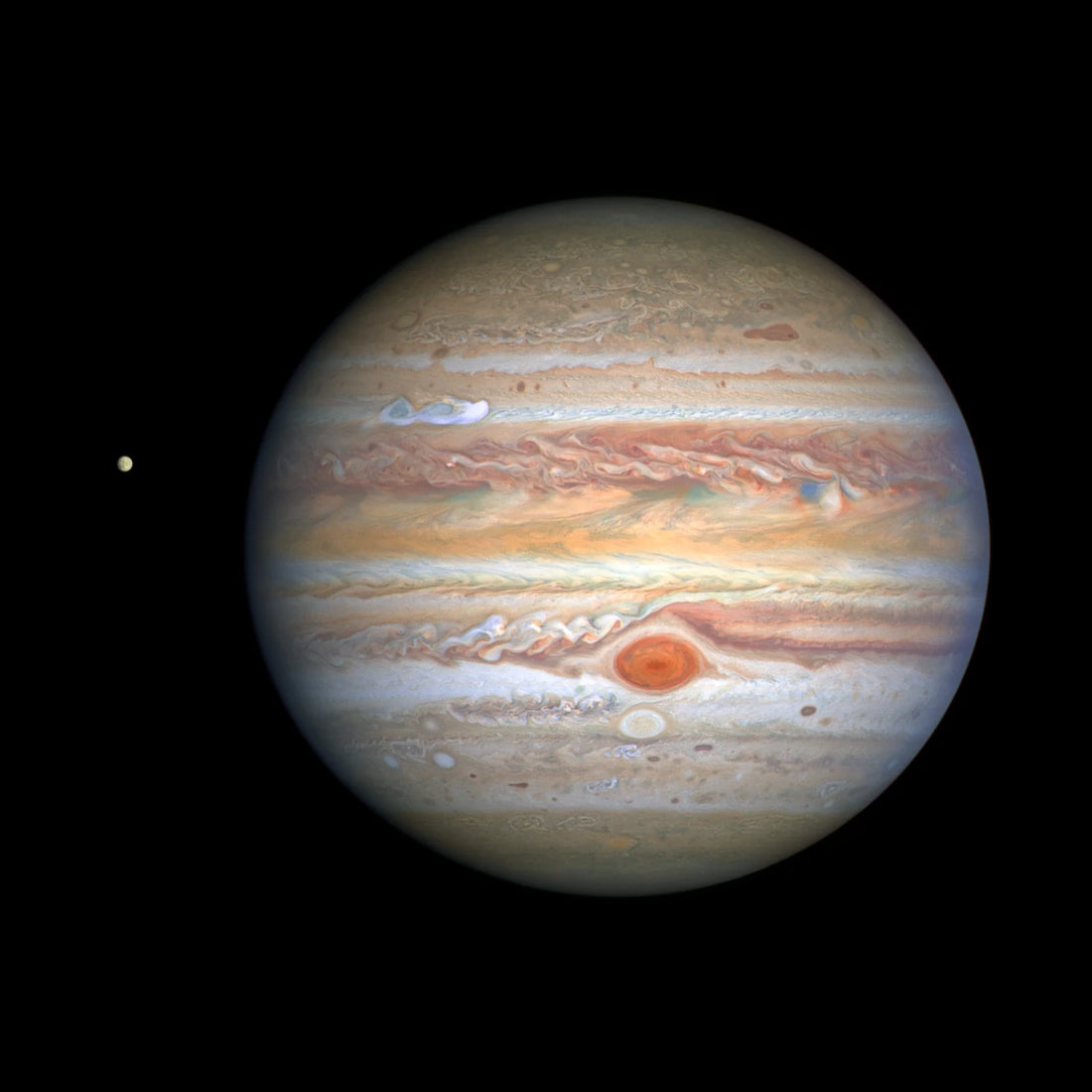
Astronz Object Of The Week: Jupiter
Object of the Week: Jupiter – The King of the Solar System
Jupiter, the largest planet in our solar system, is a breathtaking giant that never fails to impress. With its swirling cloud bands, Great Red Spot, and dynamic atmosphere, it’s one of the most exciting celestial objects to observe. Whether you’re a seasoned astronomer or just getting started, Jupiter is a must-see target in the night sky.
A Gas Giant Like No Other
Jupiter is a massive world composed mostly of hydrogen and helium. It has no solid surface—just dense layers of clouds and storms that stretch for thousands of kilometres eters. The planet’s famous stripes are jet streams that race through its upper atmosphere, while its ever-changing storms create a mesmerising view through telescopes. The most well-known storm, the Great Red Spot, is a gigantic anticyclonic storm larger than Earth that has been raging for centuries!
How to See Jupiter
Jupiter is one of the brightest objects in the night sky and is often visible with the naked eye. To find it, simply look for the bright “star” that doesn’t twinkle. A pair of binoculars will reveal its four largest moons—Io, Europa, Ganymede, and Callisto—discovered by Galileo in 1610. A telescope will let you see its cloud bands and even details of the Great Red Spot when conditions are right.
Jupiter’s Moons – A Mini Solar System
Jupiter’s Galilean moons are fascinating worlds of their own:
-
Io is the most volcanically active body in the solar system.
-
Europa has a subsurface ocean that may harbor life.
-
Ganymede is the largest moon in the solar system and even has its own magnetic field.
-
Callisto is heavily cratered and thought to have a subsurface ocean as well.
These moons offer endless intrigue, making Jupiter one of the most exciting planetary systems to explore.
Why Jupiter Matters
Beyond its stunning beauty, Jupiter plays a critical role in shaping our solar system. Its immense gravity influences asteroids, comets, and even the orbits of other planets. Scientists believe it may act as a cosmic shield, deflecting potentially hazardous objects from impacting Earth. Plus, its study helps us understand gas giants around other stars!
Capture Jupiter Yourself!
If you’re into astrophotography, Jupiter is an excellent target. A planetary camera and a telescope with good tracking can reveal its intricate cloud patterns and moons. Even with a smartphone and a telescope adapter, you can capture impressive images of this gas giant.
Don’t Miss It!
Jupiter is currently well-placed in the sky for viewing, so now is the perfect time to turn your telescope toward this magnificent planet. Whether you’re marvelling at its storms, tracking its moons, or capturing photos, Jupiter never disappoints.
Clear skies and happy observing!
